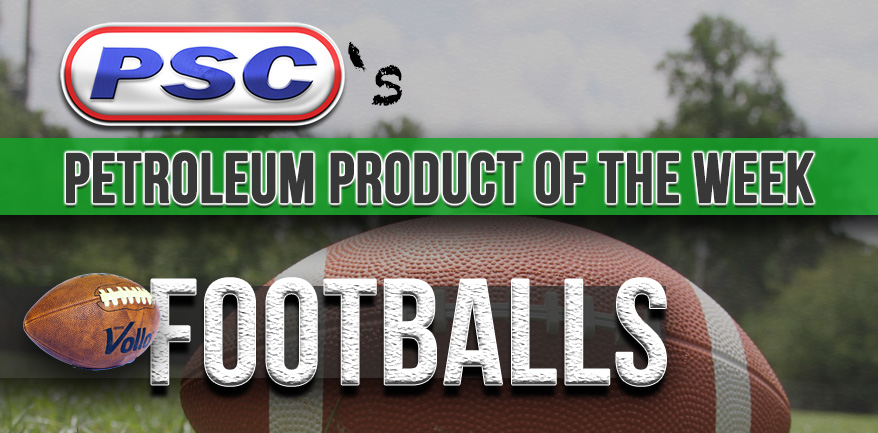Petroleum Product of the Week: Footballs
By on Nov 25 2016

It's a Thursday morning: ice cold, snow on the ground, and an extra-large coffee in my hands.
It's Thanksgiving Day, and there's about to be a big showdown on the local high school football field. On the one side we have Captain (Uncle) Dan last years MVP with over 30 total yards rushing; on the other we have the one young guy who still has good knees.
I step out of the car and breathe a breath of fresh air, ready to bring my talents to a talentless game. Both sides say a prayer, and both sides agree that there truly can be no competition among family members. It needs to be said twenty minutes from now, Uncle Dan is going to be red in the face and screaming for the entire borough to hear: MY KNEE NEVER TOUCHED! "
Oh, it's Thanksgiving again.

Every Black Friday, my body reminds me that the last time I've exercised considerably hard was the previous Thanksgiving. I try to remedy my sore muscles with large heaps of leftover turkey, but the protein fails to do any good in any reasonable amount of time. And while our mothers have tried to warn us to take it a bit easier this year, someone always ends up with a black eye, a cracked rib, or at least a 365 days of bad blood.
Yet, it's all for the love of the game.
Football is one of America's greatest sports. It has millions of followers across the globe and boasts some of the greatest athletes in the world; but so many of us can't simply watch it: we have to get our hands on the football and make a big play.

The football has a unique history. In 1869, the first football game made use of a round ball (hilariously). Shortly after they realized this wasn't going to work, they started making them into their traditional shape. Most of the better quality balls are made with cowhide, a tough leather. However, most may not know that the inner-side of the ball isn't leather at all, but vinyl.
Vinyl, like any plastic, is manufactured with petroleum. One of the most used petrochemicals in all of manufacturing is called ethylene. This substance contributes its unique formula to a great deal of plastic and rubber products but is used extensively in the production of vinyl. The vinyl on the ball serves to keep the durability high as well as the ball's ability to retain air pressure (ahem, Tom Brady). The Essential Chemical Industry even argues that ethylene is the most important organic chemical " because of its wide list of uses.






